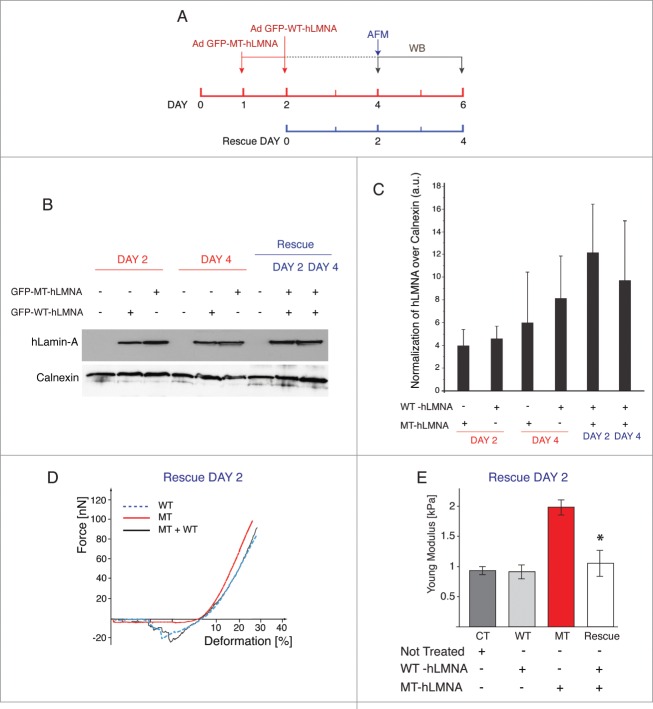Figure 6.
WT LMNA reverts the effects induced by D192G mutation. (A) Schematic representation of the experimental timeline followed. The day after plating, NRVMs were infected with viral vector carrying human D192G LMNA (red line); the next day the same cells were subjected to a second infection with WT human LMNA. The rescue effect was analyzed by AFM measurement 2 days post second infection whereas western blot were performed at days 2 and 4 (blue line). (B) Western blot analysis of lysates comparing human LMNA expression in single infected (WT or D192G) and double infected (WT and D192G) cells at day 2 and 4. (C) Quantification of the human LMNA (hLMNA) signal over the value of Calnexin used as loading control to assess differences in total LMNA expression (MT together with WT) in the rescue experiments: as expected, there is an increase in total human LMNA protein. (D) Loading-unloading curve showing a de-attachment area in D192G (Mutant) cells after 48 hours from the second infection with WT LMNA. The NRVMs subjected to double infection, displayed a similar work of adhesion properties to that of uninfected (CT) and WT cells with a consistent de-adhesion area during the unloading cycle. (E) Young modulus values highlighted the restoration of the nuclear elasticity in double infected cells. *indicates p < 0.0003 between MT (red bar) and rescued (light gray bar).

